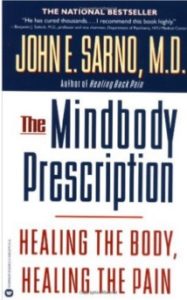Tension Myositis Syndrome – TMS
One of the most frequently tried personal injury case before a jury is the muscle strain to the neck or back which does not respond to traditional medical treatment and get better in 10 to 16 weeks. The plaintiff continues to have severe recurrent episodes of pain and goes through extensive diagnostic testing and pain management protocols and is still left with the same severe recurrent episodes of pain. All diagnostic testing is negative for permanent injury and the pain management protocols while providing temporary relief – the episodes continue to recur. It is not uncommon for the medical bills to total in excess of $30,000 and treatment to extend over several years. The plaintiffs usually are sincere individuals and family, friends and co-workers attest to the debilitating effect of the recurrent episodes of pain and changed life style of the plaintiffs. Yet juries rarely compensate these injured individuals more than several times medical expenses and frequently render verdicts of medical specials only. I have experienced these results in trials conducted in my court room well over 100 times. Typically the defendant has a highly qualified orthopedic surgeon or neurosurgeon testify that there are no objective tests which would support a casual connection between the accident and the plaintiff’s complaint of pain. To make matters worse for the injured plaintiff they are left with these painful conditions for perhaps the rest of their life. They feel tremendously let down by the system of justice and lawyers and many times become very bitter.
This same scenario troubled a young New York City orthopedic surgeon in the 1960’s – Dr John E Sarno. Dr Sarno then began a lifelong quest and study to provide help for these individuals. His study led him to a new medical diagnosis – Tension Myositis Syndrome or TMS. Basically this diagnosis was a recognition that tension is a cause of muscular pain. It should be noted that this diagnosis is distinguished from hypochondria and a purely psychological disorder. Thus while TMS is induced by an emotional phenomena it is a physical disorder. The muscles and tissues actually spasm and therefore cause pain. The medical community has difficulty recognizing and making the diagnosis. The psychologist may suspect that the patient’s symptoms are emotionally induced, but is untrained in physical diagnosis. On the other hand since very few orthopedic physicians are trained to recognize a disorder whose roots are psychological, TMS ″falls through the cracks″ and patients go undiagnosed. This leaves the patient vulnerable to being labeled – that the pain is ″all in the head″.
The lawyer then has an opportunity to help his client even though the system of justice seems to have failed by directing his client to TMS resources. After all the first objective of a lawyer is to make sure the clients gets the best possible medical care.
Fortunately, Dr Sarno has written several books and trained a subsequent generation of physicians – most notably Dr. David Schechter - who are capable of providing treatment for this perplexing and frustrating condition. Still, broad acceptance in the medical community does not exist and many individuals are ″left standing at the altar″ by the medical community. In the thousands of cases which I have evaluated and listened to testimony at trial I have yet to read or hear of a TMS diagnosis or referral. At best a physician will suggest that psychological counseling might help.
TMS treatment generally consists of a two pronged approach:
- The acquisition of knowledge and insight into the nature of the disorder.
2. The ability to act on that knowledge and thereby change the brains behavior.
Dr Sarno suggests the following steps.
- Think psychological not physical. With good reason this is possible since the medical community has run all of the tests and concluded that there is no physical disorder. So why then does the pain not immediately disappear?
- “pity me that the heart is slow to learn – What the swift               mind beholds at every turn†( last two lines of a        poem by Edna St. Vincent Millay)
- Talk to your brain.
3. Resume physical activity.
4. Discontinue all physical treatment
5. Review the daily reminders.
6. The pain is due to TMS, not a structural abnormality.
7. The direct reason for the pain is mild oxygen deprivation.
8. TMS is a harmless condition caused by my repressed emotions.
9. The principle emotion is anger.
10. TMS exists only to distract my attention from my emotions.
11. Since my back is basically normal there is nothing else to fear.
12. Therefore, physical activity is not dangerous.
13. And I must resume all normal physical activity.
14. I will not be concerned or intimidated by the pain.
15. I will shift my attention from the pain to emotional issues.
16. I intend to be in control – not my subconscious mind.
17. I must think psychological not physical at all times.

Here is a list of study resources that are a must.
See the Links at the Bottom of the Page
The Mindbody Prescription: Healing the Body, Healing the Pain by John E. Sarno M.D. (Paperback – Oct 1,
The Divided Mind: The Epidemic of Mindbody Disorders by John E. Sarno (Paperback – Mar 27, 2007)
Healing Back Pain: The Mind-Body Connection by John E. Sarno (Paperback – Feb 1, 1991)
The Mindbody Prescription: Healing the Body, Healing the Pain by John E. Sarno (Kindle Edition – Mar 15, 2001) – Kindle Book
The MindBody Workbook by David Schechter M.D. (Plastic Comb – Nov 1, 1999)
The MindBody Audio Program by David Schechter (Audio CD – April 15, 2001)
New Title 1 (The MindBody Workbook) by MD David Schechter (Kindle Edition – Jul 15, 2008) – Kindle Book
The MindBody Workbook with Patient Panel DVD by David Schechter (Plastic Comb – Oct 1, 2004)

